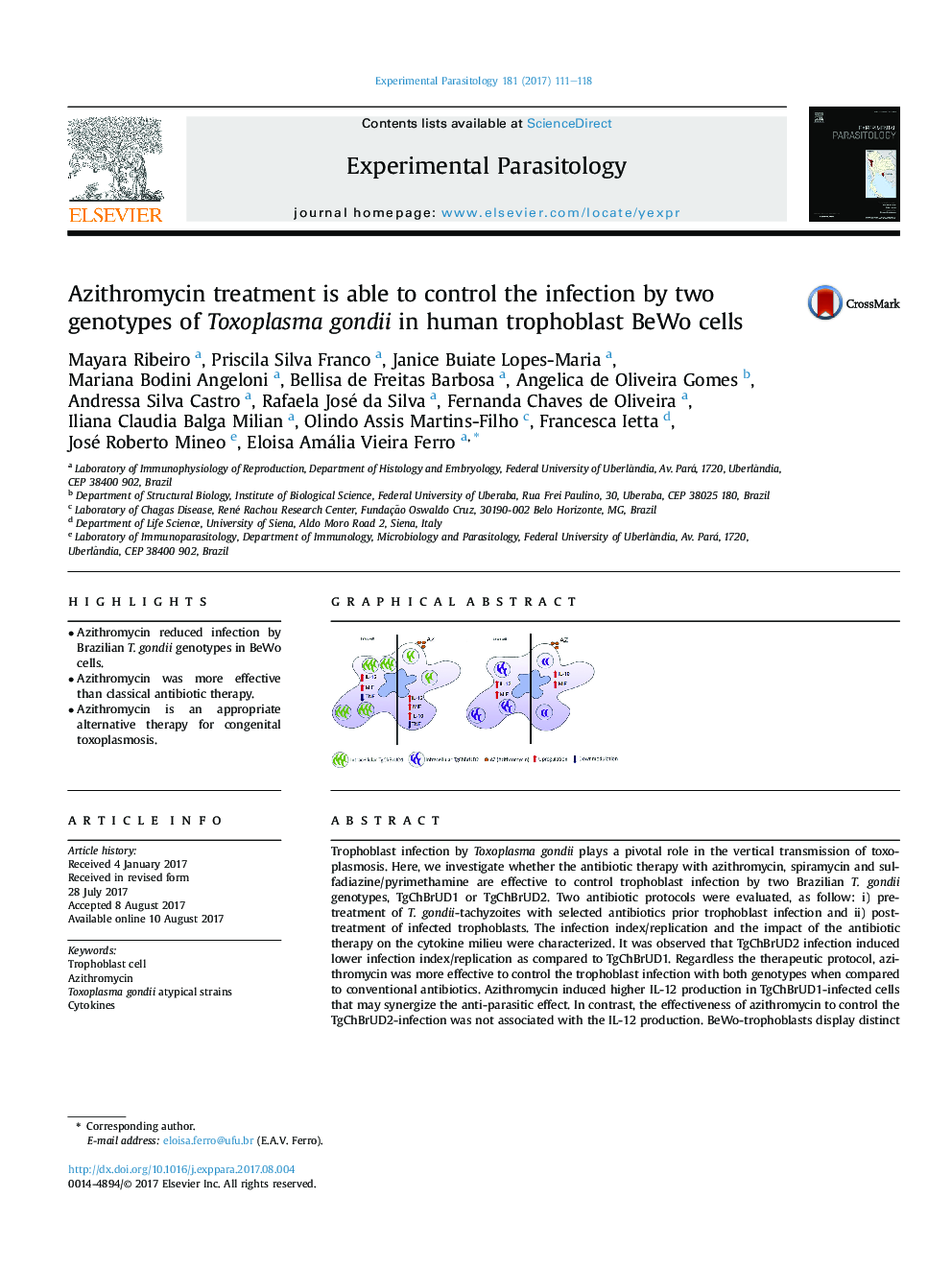| کد مقاله | کد نشریه | سال انتشار | مقاله انگلیسی | نسخه تمام متن |
|---|---|---|---|---|
| 5741035 | 1616984 | 2017 | 8 صفحه PDF | دانلود رایگان |

- Azithromycin reduced infection by Brazilian T. gondii genotypes in BeWo cells.
- Azithromycin was more effective than classical antibiotic therapy.
- Azithromycin is an appropriate alternative therapy for congenital toxoplasmosis.
Trophoblast infection by Toxoplasma gondii plays a pivotal role in the vertical transmission of toxoplasmosis. Here, we investigate whether the antibiotic therapy with azithromycin, spiramycin and sulfadiazine/pyrimethamine are effective to control trophoblast infection by two Brazilian T. gondii genotypes, TgChBrUD1 or TgChBrUD2. Two antibiotic protocols were evaluated, as follow: i) pre-treatment of T. gondii-tachyzoites with selected antibiotics prior trophoblast infection and ii) post-treatment of infected trophoblasts. The infection index/replication and the impact of the antibiotic therapy on the cytokine milieu were characterized. It was observed that TgChBrUD2 infection induced lower infection index/replication as compared to TgChBrUD1. Regardless the therapeutic protocol, azithromycin was more effective to control the trophoblast infection with both genotypes when compared to conventional antibiotics. Azithromycin induced higher IL-12 production in TgChBrUD1-infected cells that may synergize the anti-parasitic effect. In contrast, the effectiveness of azithromycin to control the TgChBrUD2-infection was not associated with the IL-12 production. BeWo-trophoblasts display distinct susceptibility to T. gondii genotypes and the azithromycin treatment showed to be more effective than conventional antibiotics to control the T. gondii infection/replication regardless the parasite genotype.
222
Journal: Experimental Parasitology - Volume 181, October 2017, Pages 111-118